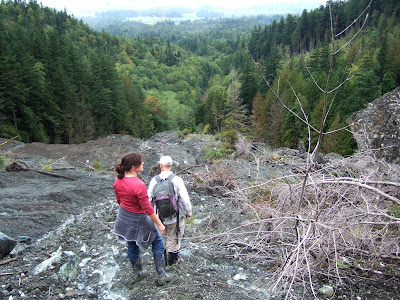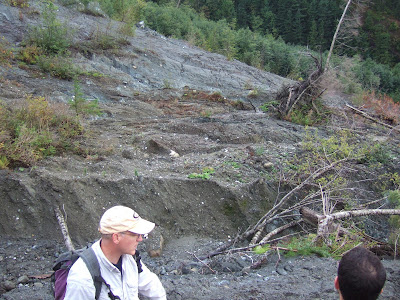I noted in a previous post how it was hard to leave-off once started reading Narrative of the Voyage of H.M.S. Herald by Berthold Seeman flattery-rocks-berthold-seemann. I found his writing style very enjoyable and very illuminating of certain facts and perceptions. The voyage of the Herald included a survey of the waters and inlets of the Strait of Juan de Fuca in the late 1840s as well surveys in Alaska and off the coast of Central and South America including the Galapagos.
Seeman's observations of sites along the Strait of Juan de Fuca and in particular very early Victoria have been a valuable resource in understanding the landscapes of the area right at that point in time where the transition from First Nations to European/American dominance was taking place. In particular our understanding of the oak/prairie ecosystems as well as the role of fire in western Washington and parts of British Columbia owe much to Seeman and his book is frequency referenced.
But beyond the technical merits I very much enjoyed the book and the writing style.
A few quotes:
"Formerly, when everything was new and striking, both to the author and the reader, an amusing and instructive work was easily written. But now, nearly every school-boy is able to give a tolerably accurate account of the most remote corners of the globe, and if a traveler wants to bring forward something new, he must dive into details which, valuable as they may be to science, are not always appreciated by the general reader." - Preface to the Narrative
"The beautiful service for the dead appears more impressive at sea than in other situations. The silence within the ship, disturbed by nothing but the slow tolling of the bell, - the attentive and even pious demeanor of the men, - the unmarked spot in which the body is committed to the deep, - seem to shadow forth the unknown and illimitable eternity far more than the most solemn pageantry on land." - Commenting on the three sea burials between Panama and Flattery Rocks
"Our heads were full of American War, in consequence of the dispute about the Oregon Territory." - Given the delays in communication, there was some concern about what circumstances they find themselves when encountering Americans as a huge chunk of land was in dispute between the two countries.
"While nature has imparted to most animals a desire for cleanliness, uncivilized man, with all the intelligence, ingenuity, cunning, and skill of his class, seems in general to be uncleanly, to revel in filth." - Alas perhaps it is all too easy to fall into revelling in filth.
Seeman's observations of sites along the Strait of Juan de Fuca and in particular very early Victoria have been a valuable resource in understanding the landscapes of the area right at that point in time where the transition from First Nations to European/American dominance was taking place. In particular our understanding of the oak/prairie ecosystems as well as the role of fire in western Washington and parts of British Columbia owe much to Seeman and his book is frequency referenced.
But beyond the technical merits I very much enjoyed the book and the writing style.
A few quotes:
"Formerly, when everything was new and striking, both to the author and the reader, an amusing and instructive work was easily written. But now, nearly every school-boy is able to give a tolerably accurate account of the most remote corners of the globe, and if a traveler wants to bring forward something new, he must dive into details which, valuable as they may be to science, are not always appreciated by the general reader." - Preface to the Narrative
"The beautiful service for the dead appears more impressive at sea than in other situations. The silence within the ship, disturbed by nothing but the slow tolling of the bell, - the attentive and even pious demeanor of the men, - the unmarked spot in which the body is committed to the deep, - seem to shadow forth the unknown and illimitable eternity far more than the most solemn pageantry on land." - Commenting on the three sea burials between Panama and Flattery Rocks
"Our heads were full of American War, in consequence of the dispute about the Oregon Territory." - Given the delays in communication, there was some concern about what circumstances they find themselves when encountering Americans as a huge chunk of land was in dispute between the two countries.
"While nature has imparted to most animals a desire for cleanliness, uncivilized man, with all the intelligence, ingenuity, cunning, and skill of his class, seems in general to be uncleanly, to revel in filth." - Alas perhaps it is all too easy to fall into revelling in filth.





















































